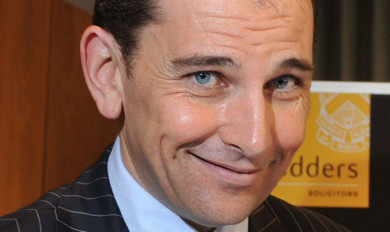House prices could be set to climb this year as a Government-backed boost from the Help to Buy scheme kicks in on the Scottish property scene.
Experts say the stimulus, launched in September, will increase the number of buyers in the market in the months ahead, and have urged developers to build more homes in a bid to meet growing demand.
The initiative, which provides prospective homebuyers with a Government-backed loan of up to 20% on the cost of a new property, is seen as a key factor for the fortunes of the construction sector this year although demand for family properties is already said to have increased significantly.
The success of a similar Westminster-backed scheme was hailed by Prime Minster David Cameron, after it gave the property market south of the border a major shot in the arm.
But there are concerns the stimulus has disproportionately boosted London and the south east, where prices have grown by an average of more than 10% in the last year, without helping regions where the economic recovery has been more sluggish.
Lindsay Darroch, head of the property division at Dundee solicitors Blackadders, said the introduction of the Scottish version of Help to Buy was already having an impact on the market.
But he also warned a shortage of new-build family homes is increasing competition.
“The first completed transaction in Scotland took place at a Barratt development in Aberdeen in November, and more will begin to filter through in Tayside and throughout the country in the weeks ahead,” Mr Darroch said.
“The supply of quality new-build properties is vital in meeting demand.
“At the moment there is a shortage of properties of certain types, and we are seeing those flying off the shelves going to closing dates because of demand.
“In particular that applies to family homes, the three- and four-bedroom properties.
“That is an area in which housebuilders have a key role and developers are certainly taking on that challenge.”
Mr Darroch said the property market locally had been more robust during 2013 but said it still had a long way to go to reach pre-recession levels, when both the number of sales and the amounts achieved for properties were considerably higher.
“The interesting factor to take into account is that there has not been a rush of property on to the market. Some areas are up and some are down but the variation is minimal typically just a single percentage point up or down,” he added.
“Together with the growing numbers of sales, there is obviously a challenge in maintaining supply to cater for demand.”
Housebuilder Barratt North Scotland, one of string of active developers in east central Scotland, said it was concentrating on the family market with developments such as Innis Park at Inchture.
“Our experience with Innis Park has demonstrated the potential in Tayside, with a steady growth in interest and sales throughout 2013,” said sales director Mike Cowie.
More than 6,000 people have put in offers on homes and applied for mortgages using the Westminster version of Help to Buy since it was launched about three months ago, new statistics have revealed.
And Land Registry figures released earlier this week showed house prices in London have surged by more than 10% year-on-year, while they edged down by 1.6% annually in the north east of England.
But Mr Cameron yesterday dismissed fears over a housing bubble, saying Help to Buy would help those outside London “realise their dream” of owning a home.
Scotland’s scheme is more generous than the UK one, offering 5% deposits and 20% government buy-ins on new-build properties from participating developers.
